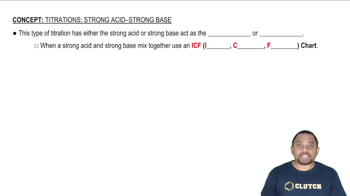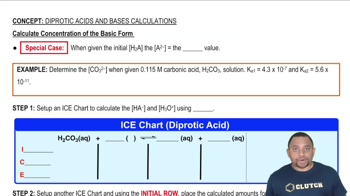Here are the essential concepts you must grasp in order to answer the question correctly.
pH Scale
The pH scale measures the acidity or basicity of a solution, ranging from 0 to 14. A pH of 7 is neutral, values below 7 indicate acidity, and values above 7 indicate basicity. The scale is logarithmic, meaning each whole number change represents a tenfold change in hydrogen ion concentration.
Recommended video:
Strong Bases
Strong bases, like lithium hydroxide (LiOH), completely dissociate in water to produce hydroxide ions (OH-). This complete dissociation means that the concentration of hydroxide ions directly influences the pH of the solution, making it essential to calculate the concentration of LiOH to determine the resulting pH.
Recommended video:
Strong Acid-Strong Base Titration
Concentration Calculations
To find the pH of a solution, it is crucial to calculate the molarity, which is the number of moles of solute per liter of solution. For lithium hydroxide, the mass of the solute is converted to moles using its molar mass, and then the volume of the solution is used to find the concentration, which is necessary for determining the pH.
Recommended video:
Calculate Concentration of the Basic Form
 Verified step by step guidance
Verified step by step guidance


